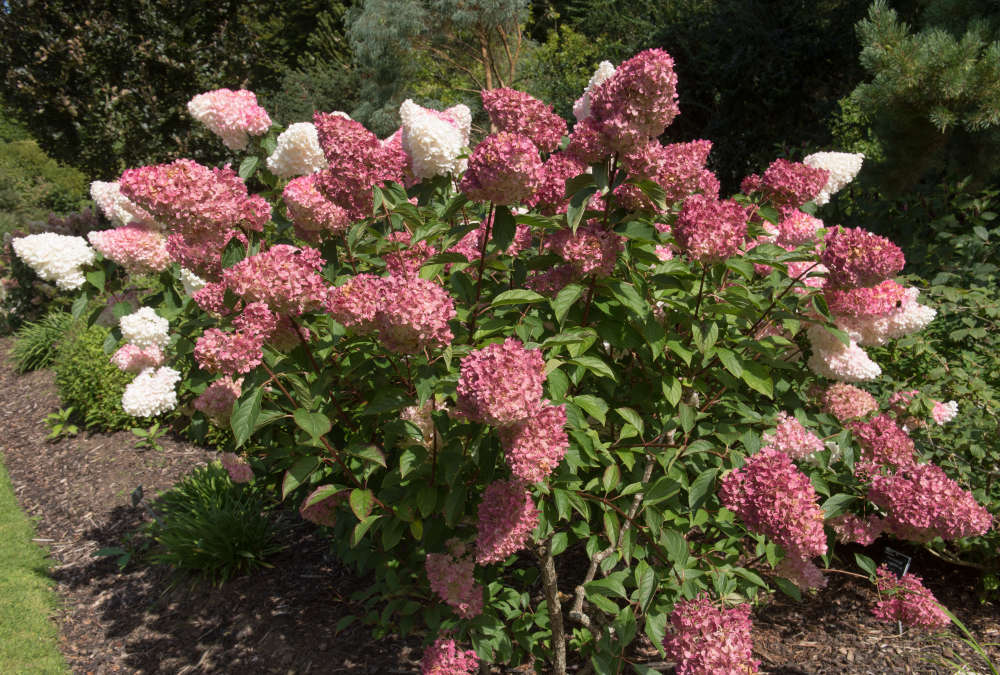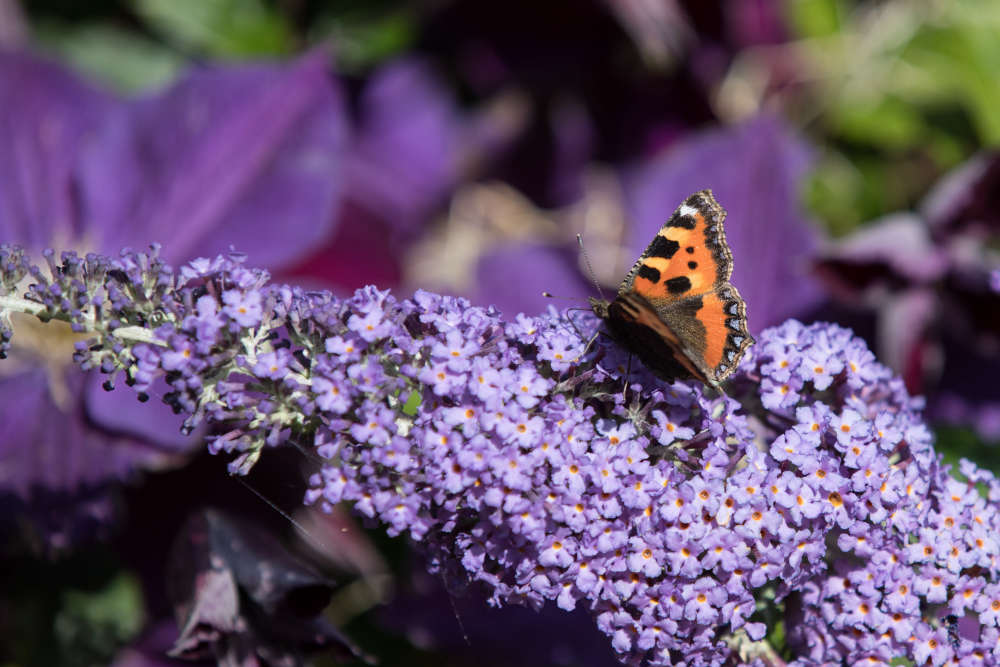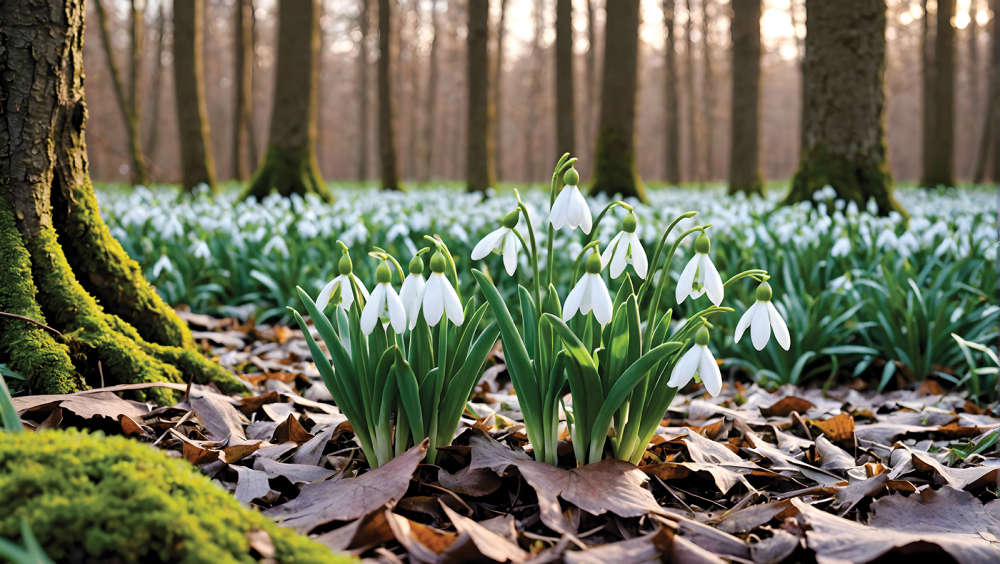
If your garden’s looking parched and bare, why not invest in a few shrubs to fill the gaps. Flo Whitaker picks six of the best for late summer colour
The hydrangea family is enormous, but if you have room for just one, then nothing beats Hydrangea paniculata ‘Limelight’, (1.5 metres). Its pure white flowers emerge around July, gently fade into antique creamy shades, then become flushed with pink in autumn. Such a long season of interest – and the flowers dry beautifully too. Given moist soil and light shade, this obliging plant will live forever.

Many fuchsias look their best in late summer, but the delightfully-named ‘Mrs Popple’ deserves special mention. Frequently mislabelled as a ‘climber’, (no such fuchsia exists - bah!) nevertheless, this vigorous character is about as close as it gets. Given a simple support of bamboo canes and string, Mrs Popple will reach a metre in height, with show-stopping blooms in scarlet and purple ¬– perfect for a large patio pot.
Planted into moist soil in a sunny spot, border penstemons will bloom into October - or beyond. Their elegant flowers last a week in a vase. Some varieties are not reliably hardy, so take cuttings or grow tender types in pots for overwintering in a frost-free greenhouse. Varieties of low-growing Penstemon pinifolius, (20-30cms) are unlike border types. Well suited to rockeries; they require dry, gravelly soil and produce vivid red or sulphur yellow flowers – the diverse penstemon family offers blooms in every colour.

Bees and butterflies adore the nectar-rich flowers of buddleja. These tough plants tolerate dry, alkaline soils, (hence their easy colonisation of derelict buildings, motorway verges and railway tracks). Drought-resistance, combined with silvery-grey foliage make them ideal for a maritime-themed or gravel garden. Check the labels before you buy ¬– many are vigorous but can be tamed by pruning in spring. Smaller buddlejas make good candidates for containers. I grow a semi-trailing variety, ‘Dreaming Purple’, in a tall patio pot. It flowers from June to September and seemingly thrives on neglect.
Another candidate for a gravel/seaside garden is perovskia. Looking rather like giant lavender, it produces stems of tiny flowers and grey-ish aromatic foliage, (it’s a member of the sage family). ‘Blue Spire’ is tall-ish, reaching approximately 1.2 metres but may casually ‘flop’ in breezy weather. Shorter varieties are available, should you want a neater look.

If hollyhocks fail miserably in your garden, (Sussex must be the global capital for hollyhock rust disease) consider lavatera, whose saucer-shaped flowers bear a passing resemblance to hollyhocks. Lavateras can also suffer from rust disease, but seldom fatally – and they have a far longer flowering season than beautiful-but-brief hollyhocks. There are two forms of lavatera; fast-growing annuals, (sow in March/April) and shrubby perennials. Shrubby types tend to be short-lived – so floriferous, they can, literally, flower themselves to death. Fortunately, cuttings taken in spring/early summer will root quickly and easily.

 Blooming Times: Harbingers of Spring
Blooming Times: Harbingers of Spring
 Homes Extra: Home Sanctuary
Homes Extra: Home Sanctuary
 Home Style: Ancient & Modern
Home Style: Ancient & Modern
 Blooming Times: Happy Faces
Blooming Times: Happy Faces
 Blooming Times: Winter Sparklers
Blooming Times: Winter Sparklers
 Homes Extra: Restore, Repair, Recycle
Homes Extra: Restore, Repair, Recycle
 Home Style: A Scandi Winter's Tale
Home Style: A Scandi Winter's Tale
 Blooming Times: Winter Wonders
Blooming Times: Winter Wonders
 Home Style: Bold, Brave & Beautiful
Home Style: Bold, Brave & Beautiful
 Blooming Times: The Answer Lies in the Soil
Blooming Times: The Answer Lies in the Soil
 Blooming Times: Heavenly Hyacinths
Blooming Times: Heavenly Hyacinths
 Legendary Builds with Phoenix Construction Services
Legendary Builds with Phoenix Construction Services
 Blooming Times: Know Your Enemy
Blooming Times: Know Your Enemy
 Bespoke Dreams from Eridge Green Kitchens
Bespoke Dreams from Eridge Green Kitchens
 10 Hot Years: iFit Fires & Flues
10 Hot Years: iFit Fires & Flues
 Home Style: Bold Type
Home Style: Bold Type
 Blooming Times: The Sky's the Limit
Blooming Times: The Sky's the Limit
 Home Style: A Better Way of Life
Home Style: A Better Way of Life
 Homes Extra: Shed Space
Homes Extra: Shed Space
 Blooming Times: Top of the Pots
Blooming Times: Top of the Pots